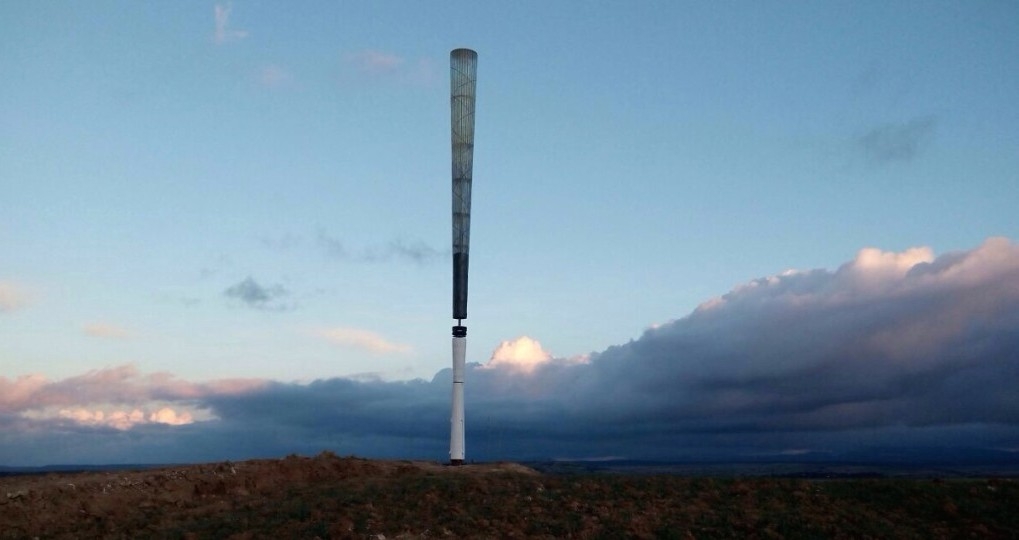Spinning through flying space, three blade wind turbines are good for the climate, but are known to kill birds. Strategic positioning and shut downs during peak migrations help, but a Spanish company may have invented an even better solution that will come onto the market soon, the Vortex Bladeless…

Vortex Bladeless wind turbine prototype © Vortex
Wind energy is thankfully moving us away from the oil dinosaurs, and more and more are popping up at offshore sites and on land. But three blade turbines can pose a dangerous obstacle for unsuspecting birds if they are placed in key habitats and important migratory corridors, as has been the case in Spain. It is true that the total number of bird deaths caused this way is insignificant when compared to other threats, like house cats, but wind turbines are more likely to add to the risks for long-lived and rare birds, such as raptors, which are of great conservation concern. So in a world where wind energy is ever growing because it is an environmental solution that will help us fight climate change, anyone who develops a wind turbine without blades would certainly be doing birds a favor.
Just consider southern Spain’s Tarifa, which overlooks the Straits of Gibraltar, where there are nearly 1000 turbines. Here you can see many cliff nesting raptors in the area, Griffon Vultures, Bonelli’s Eagles, Short-toed Snake-eagles, Common Kestrels and the endangeredEgyptian Vulture. Since 2002, turbines at only two of Tarifa’s sites have been killing about57 Griffon Vulture and 67 Common Kestrel each year. These straits are also an important migratory corridor for thousands of migrants travelling between Europe and Africa. Groups of birds travelling at night or in poor visibility are especially vulnerable when they encounter turbine blades. The sad truth is that no one really knows how many birds die because when a bird gets hit, they may fly for a while before falling to the ground dead or hurt. It is often impossible to find dead or injured birds, as many get carried away and eaten by scavengers. For long lived species with small populations and low birth rates, especially any endangered species, deaths that occur this way can be devastating.
This is why SEO/BirdLife in Spain has taken a close look at the environmental and human benefits of Vortex Bladeless wind energy in comparison to three-bladed wind turbines. But what exactly is Vortex Bladeless? It’s a wind generator without blades. Instead of capturing energy via the rotational motion of a turbine, it takes advantage of what’s known asvorticity, an aerodynamic effect that occurs when wind breaks against a solid structure (Kármán Vortex Street). The Vortex structure starts to oscillate, and captures the energy that is produced.
Not surprising, SEO/BirdLife discovered that bladeless would not only be good for birds, it’s good for people too. A turbine without blades removes the threat of dangerous obstacles hitting birds as they try to fly through. But its structure also takes up less space so would leave more land untouched and cause less habitat fragmentation, so again, good for birds. The Vortex design is also much simpler than conventional wind turbines, so much cheaper, and less pieces which makes them easier to install. The bladeless turbines are completely silent, a plus for people living close by.
So why haven’t we seen the Vortex Bladeless anywhere yet? Well, the technology is still at the prototype stage and needs investors to scale it up to hit the market. The company has launched a campaign where investors can contribute with small sums of money in exchange for funny t-shirts and hoodies with designs showing the benefits to birds. They hope to pilot the bladeless in India to test the technical and economic feasibility of going commercial.
Who knows, bladeless wind technology may be coming your way soon…
http://www.birdlife.org/europe-and-central-asia/news/three-blades-or-none